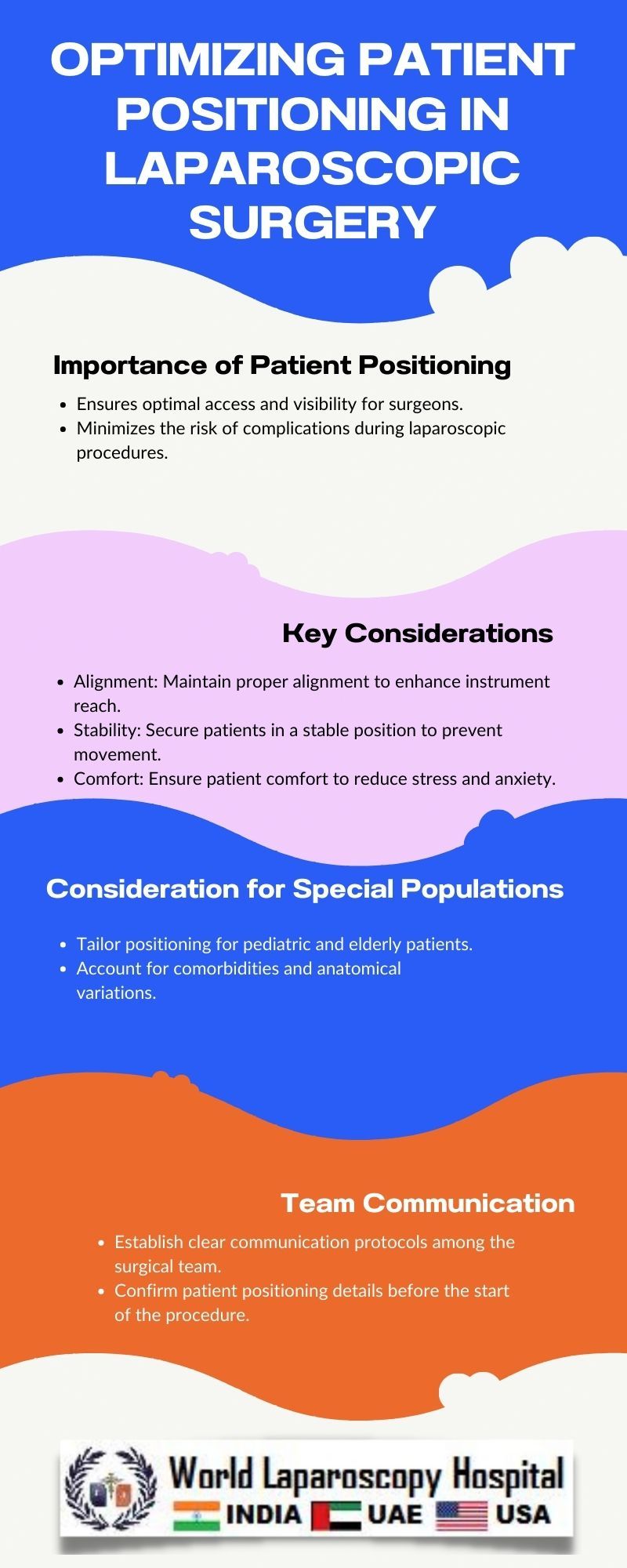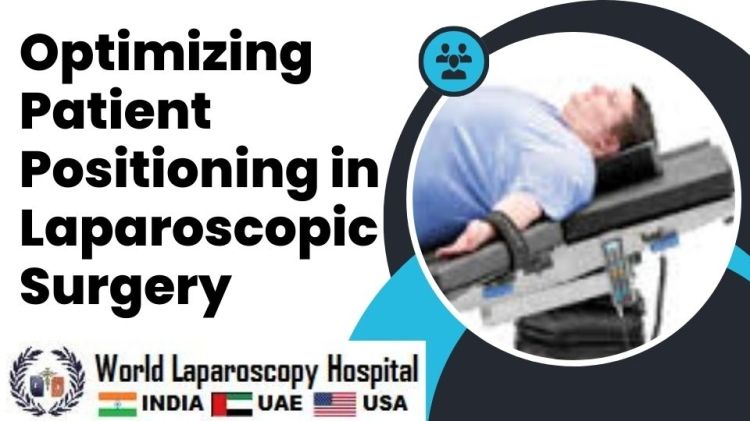Introduction
Laparoscopic surgery has revolutionized the field of minimally invasive procedures, offering numerous advantages such as reduced recovery time, decreased pain, and smaller incisions. However, the success of laparoscopic surgery heavily depends on optimal patient positioning. Proper alignment not only enhances surgical access and visibility but also contributes to overall patient safety and comfort. In this comprehensive guide, we will delve into the importance of optimizing patient positioning in laparoscopic surgery, exploring key considerations, techniques, and advancements in the field.

Importance of Patient Positioning
Maximizing Surgical Access
One of the primary objectives of patient positioning in laparoscopic surgery is to provide the surgeon with optimal access to the surgical site. Proper alignment allows for a clear line of sight and facilitates the precise manipulation of instruments. This, in turn, minimizes the risk of inadvertent tissue damage and ensures a more controlled and efficient procedure.
Enhancing Visibility
Clear visualization of the operative field is crucial for the success of laparoscopic surgery. Patient positioning impacts the angle at which the laparoscope is inserted, influencing the surgeon's perspective. By optimizing positioning, surgeons can achieve better visualization of anatomical structures, leading to more accurate and safer interventions.
Mitigating Complications
Inadequate patient positioning can contribute to complications such as nerve injuries, pressure ulcers, and musculoskeletal problems. Addressing these concerns through careful positioning not only reduces the risk of intraoperative complications but also enhances postoperative recovery by minimizing patient discomfort and promoting faster healing.
Key Considerations in Patient Positioning
Anatomical Considerations
Understanding the patient's anatomy is fundamental to effective positioning. Factors such as body habitus, abdominal wall thickness, and organ mobility must be taken into account. Tailoring the positioning strategy to the individual patient ensures optimal exposure and maneuverability during the procedure.
Pneumoperitoneum Effects
Laparoscopic surgery involves the insufflation of the abdominal cavity with carbon dioxide to create a working space. This pneumoperitoneum can influence patient physiology, particularly respiratory and cardiovascular function. Careful consideration of patient positioning is crucial to minimize the impact of pneumoperitoneum on these physiological parameters.
Trendelenburg and Reverse Trendelenburg Positions
The Trendelenburg and reverse Trendelenburg positions, tilting the patient's body head-down or feet-down, respectively, are commonly employed to facilitate access to different regions of the abdomen. These positions harness the effects of gravity to expose specific anatomical structures and enhance instrument maneuverability.
Techniques for Optimal Patient Positioning
Supine Position
The supine position is a standard starting point for many laparoscopic procedures. The patient lies flat on their back, with the arms tucked at their sides. This position provides easy access to the upper and lower abdomen and is suitable for a wide range of surgeries, including cholecystectomy and appendectomy.
Lithotomy Position
The lithotomy position, commonly used in gynecological and urological laparoscopic procedures, involves placing the patient in a dorsal supine position with the legs elevated and flexed. This position offers improved access to the pelvis and lower abdomen, allowing for better visualization and manipulation of reproductive and urinary organs.
Lateral Decubitus Position
For certain procedures, such as laparoscopic renal surgery, the lateral decubitus position may be preferred. In this position, the patient lies on their side, providing lateral access to the operative site. Careful padding and support are essential to prevent nerve compression and ensure patient comfort during more extended procedures.
Robotic-Assisted Positioning
The advent of robotic-assisted laparoscopic surgery has introduced new possibilities in patient positioning. Robotic systems often allow for increased degrees of freedom, enabling surgeons to perform intricate maneuvers with enhanced precision. Optimizing patient positioning in robotic-assisted surgery involves considering the unique requirements of these advanced systems.
Advances in Patient Positioning Technology
Articulating Surgical Tables
Articulating surgical tables offer increased flexibility in adjusting patient position during laparoscopic procedures. These tables can be tilted, rotated, and adjusted to accommodate the specific needs of each surgery. This adaptability enhances the surgeon's ability to access the surgical site optimally.
Pressure-Relieving Pads
To mitigate the risk of pressure ulcers during lengthy laparoscopic procedures, pressure-relieving pads designed for specific anatomical regions are employed. These pads distribute pressure evenly, reducing the likelihood of skin damage and enhancing patient comfort throughout the surgery.
Virtual Reality Simulation
Virtual reality (VR) simulation is becoming an integral part of laparoscopic surgical training. Surgeons can practice and refine their skills in a virtual environment that replicates real surgical scenarios. This technology also extends to planning and simulating patient positioning strategies, allowing for more precise and individualized approaches.
Challenges and Future Directions
Patient-Specific Considerations
The concept of precision medicine extends to laparoscopic surgery, emphasizing the need for patient-specific approaches to positioning. Factors such as age, comorbidities, and previous surgical history should be considered to tailor positioning strategies for optimal outcomes.
Integration of Artificial Intelligence
The integration of artificial intelligence (AI) into laparoscopic surgery holds promise for optimizing patient positioning. AI algorithms can analyze patient data, surgical plans, and historical outcomes to recommend personalized positioning strategies, taking into account a multitude of variables for enhanced precision.
Ergonomics and Surgeon Well-being
While patient positioning primarily focuses on patient outcomes, attention to ergonomics is crucial for the well-being of the surgical team. Designing operating rooms and equipment to promote ergonomic principles can reduce surgeon fatigue and enhance overall team performance.
Conclusion
Optimizing patient positioning in laparoscopic surgery is a multifaceted endeavor that encompasses anatomical considerations, surgical techniques, and technological advancements. By recognizing the significance of precise positioning, surgeons can maximize access, visibility, and patient safety. As technology continues to evolve, the future of laparoscopic surgery holds exciting possibilities for personalized, data-driven approaches that elevate the standard of care and redefine surgical excellence.
